Google Nest Hub - Three Months Later
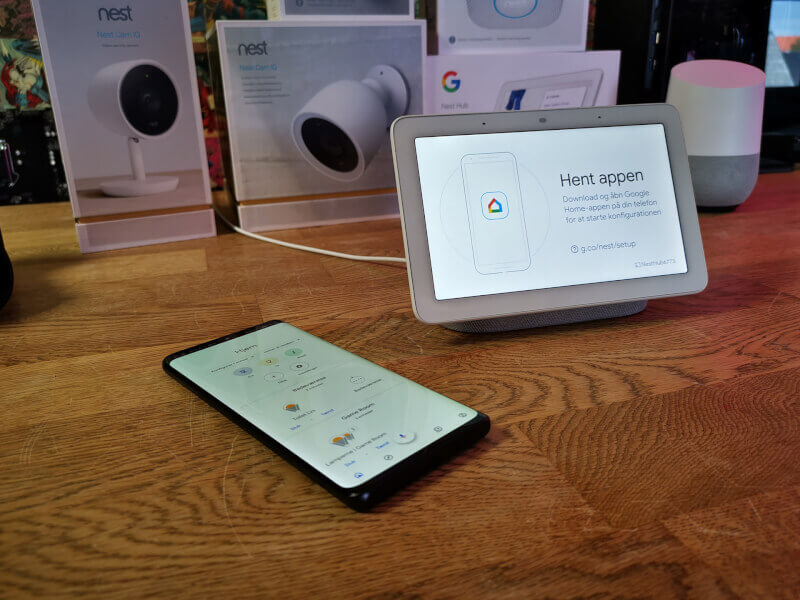
At the time that we first received the Google Nest Hub, we wrote a bit about our first impression of the device, but also made a promise that we’d return to it after an extensive period of use. This was in part due to the fact that I received it early on, and it became quite apparent that there were some issues with the Danish software at that early stage. So we decided to give it an extra chance by letting some time pass.
Also, it does take a bit of time to introduce a device such as the Nest Hub into your daily life. As such, it also takes a while before you can really tell if the device is beneficial to your every-day household routines, or if it simply is a gimmick that is only fun to toy around with in the beginning. So, a little more than three months have passed, in which time, I’ve had the Google Nest Hub placed in my kitchen, and it’s now time to have a retrospective.

An important starting point that is necessary if any good is to come of a device such as the Google Nest Hub is that you can see the benefit of the smart home approach. If you cannot buy in on the concept of a smart home where you can control various devices around your household via either voice commands or a device such as the Nest Hub then there’s probably no point in continuing reading.
If you are not planning to introduce network-connected lights, e.g. Philips Hue or IKEA’s wireless lighting, or other similar devices, then it’s quite limited what you’ll be getting out of a device such as the Google Nest Hub. It’s as simple as that.
We previously made a video featuring Google Home. Check it out, but do note that it is in Danish.
Even though you might already be fully onboard with smart home solutions, and maybe even own one or more Google Home speakers, you might still question: “What exactly does the Nest Hub offer that I don’t already have with my phone or Google Home speakers?”
I’ve seen this question pop up time and time again when lurking on the Smart Home groups on Facebook or in conversations with other users of the Google Home speakers. Google Nest Hub does all the same tricks as the Google Home speakers, but it has a few additional ones up its sleeve.
The most noteworthy difference between the Nest Hub and the other Google Home devices is of course the added screen. On the Nest Hub, we find a 7-inch touch screen that gives us a more immediate way of interaction compared to the Google Home speakers that will only respond to voice commands. When using the voice commands with the Nest Hub, you also get a visual response, on-screen, aside from the normal audio response that Google provides. For example when asking for the weather forecast or performing searches on Google.
The screen also gives you the option of monitoring and managing the units that you’ve set up in your home with the Google Home app. In case you don’t want to do this using voice commands.
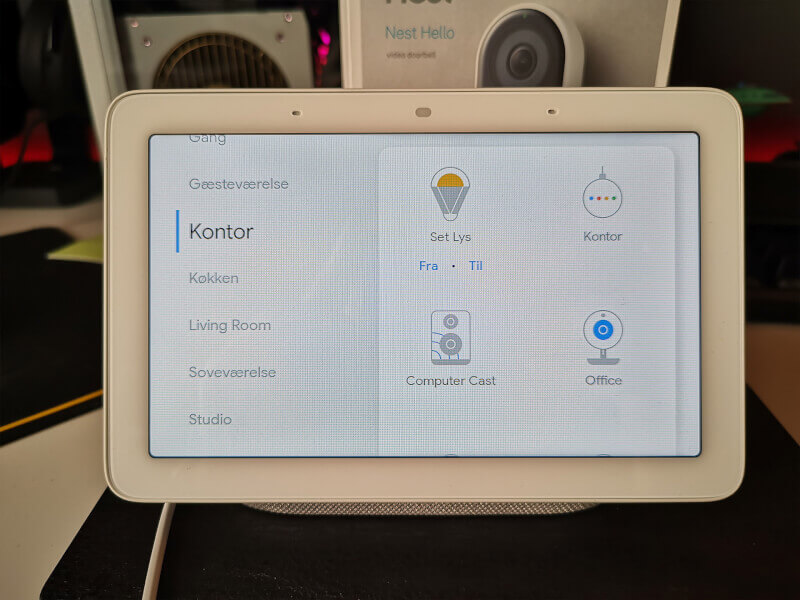
If you have cameras set up as part of you smart home solution, or if you, for instance, have a Nest video doorbell, there’s the added bonus that you can have the video feed displayed on your Nest Hub device.
How you use the screen of the Nest Hub is largely dependent on where in your household you place it. If you place it in your bedroom, it can be used as a highly advanced alarm clock reminiscent of our faithful clock radios of our past. You can choose whether to display a clock or if you want it to just show a slideshow. You can then choose from either your own photos straight from your Google Photos, or various stock photos from Google similar to the ones we know from the backgrounds of the Chromecast devices.
The brightness of the screen automatically adjusts itself depending on the surroundings, so as it turns darker, the screen dims itself more, so that it doesn’t keep you awake if placed right next to your bed. Given the little time I spend in the bedroom, I don’t feel that this is the place in which the device is fully utilized. I feel that it’s too much to pay $149 for an alarm clock after all.
Personally, I’ve had the Nest Hub placed in my kitchen. I find that this is the place in which it has the most to offer and where I find it to be most useful. Just the slideshow feature, where it shows photos of friends, family, pets and holiday memories is nice to have running in the background when cooking or just hanging out in the kitchen.
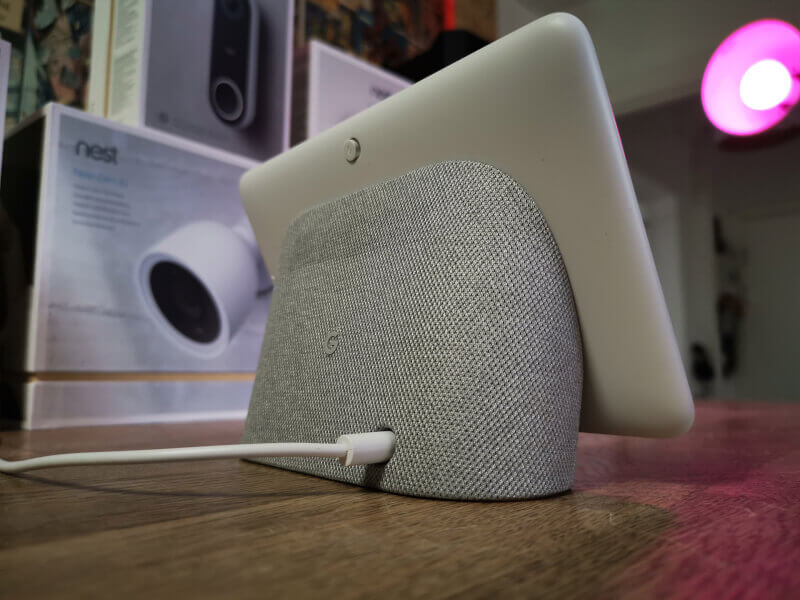
When it’s located in the kitchen, it’s a breeze to add new items to your shopping list via voice commands the moment you notice that you’re out of milk or need to buy eggs. It’s also quickly synced across all of your devices so that it appears almost instantaneously on your smartphone, which will be handy once you are standing in the supermarket.
In terms of practicality, it’s also quite useful when cooking. It can be for basic tasks such as standing in as a timer when boiling eggs or cooking pasta, but it can also be helpful when converting sizes or weights when dealing with a recipe that uses a different scale of measurement.
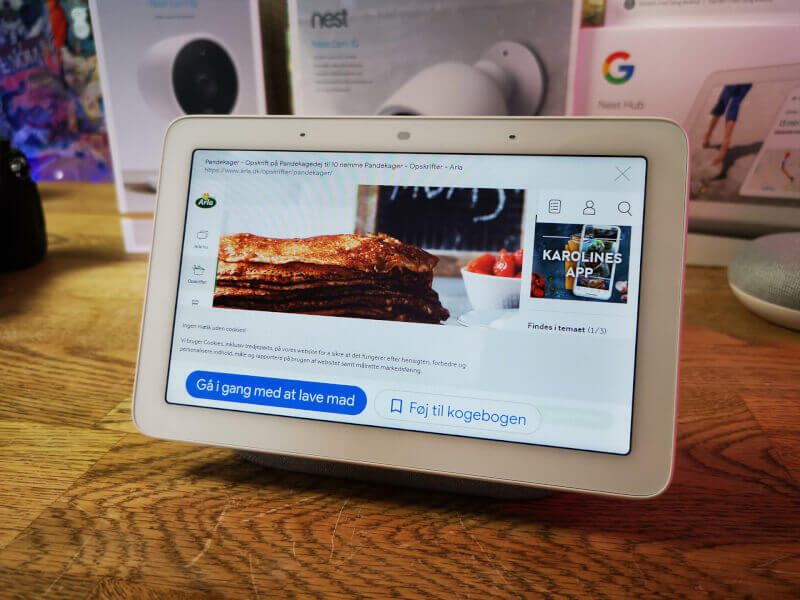
It also has a built-in feature to search for recipes if you need help for that sort of thing. The Nest Hub pulls the data from the internet, based on your search query, and you can then have it go over all of the ingredients, step by step, using only your voice to control it whilst your hands are busy handling the ingredients. As you continue to discover new recipes that you like, you can save them in a “cookbook” on the Nest Hub. This way, you will have easy access to them the next time you need them.
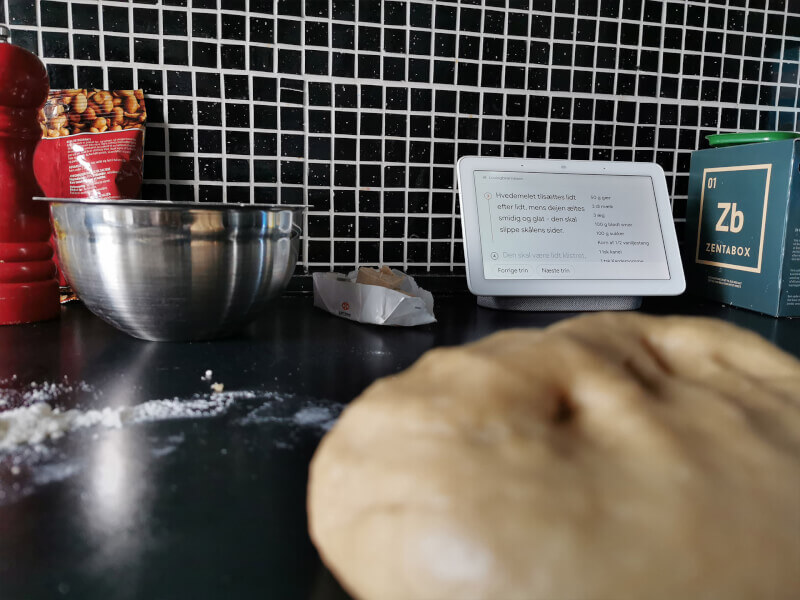
If you are down with the cooking, and just want some entertainment whilst peeling the potatoes, the Nest Hub can of course also function as a speaker for you music - just like all the other Google Home speakers. The sound quality isn’t overwhelmingly good, and falls in between the Google Home and Google Home Mini. For my tiny urban kitchen, the sounds was quite adequate, though. Alternatively, you can redirect the audio to another set of speakers via bluetooth, if you want better sound quality.
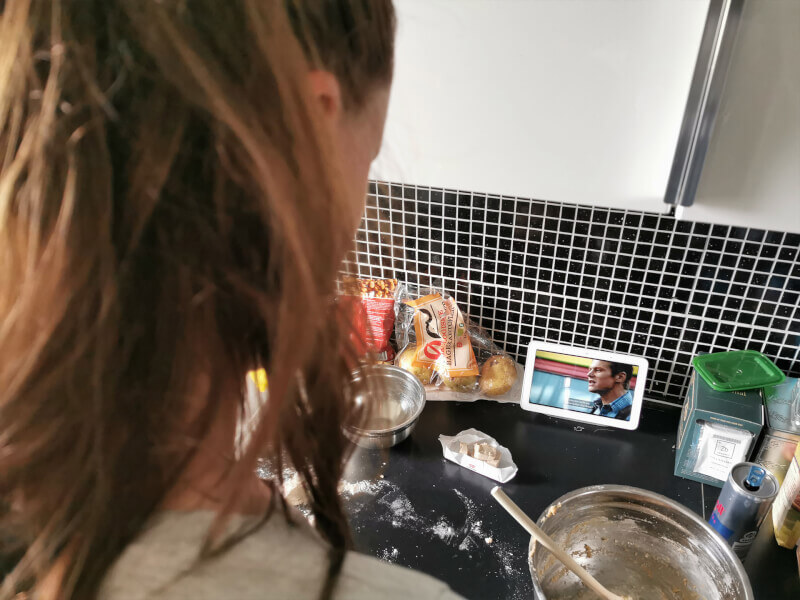
The display of course also gives you the option of watching video, which was used quite a lot in this household. You can play content straight from YouTube via voice command, or you can cast content from other services via your smartphone - just like with a regular Chromecast-device. The Nest Hub doesn’t support Netflix yet, which, according to Google, is because of Netflix wanting to see how the new platforms performs, before committing to it.
So, if you’re on the Smart Home bandwagon, and already have the Google Home solution and are comfortable using the voice commands, the Google Nest Hub is a fine addition.

During the testing period, it’s been a good and practical addition to my kitchen. I more or less use it daily in some way or form. The option to listen to music and watch YouTube or news, whilst cooking, is now a fixed part of my routines in the kitchen. This, combined with the more practically oriented features, such as recipes, shopping list and quick access to conversion and timer functionalities in the kitchen, has made the Google Nest Hub a worthwhile addition.
The price of the Google Nest Hub is around $149, which might, for some, seem like a rather steep price. However, I find that it is pretty as long as you are able to make full use of the features that it has to offer. Still, it’s certainly a product that falls into the “nice to have” category.
In the beginning, there were a few issues with the Nest Hub and the Danish language package, but they’ve eventually been addressed through regular updates. It’s actually been quite a while since I ran into any noteworthy problems. With that said, some things are still missing when it comes to Google Home in Danish - which is due to the language selection. Some features are simply not yet made with Danish language in mind.
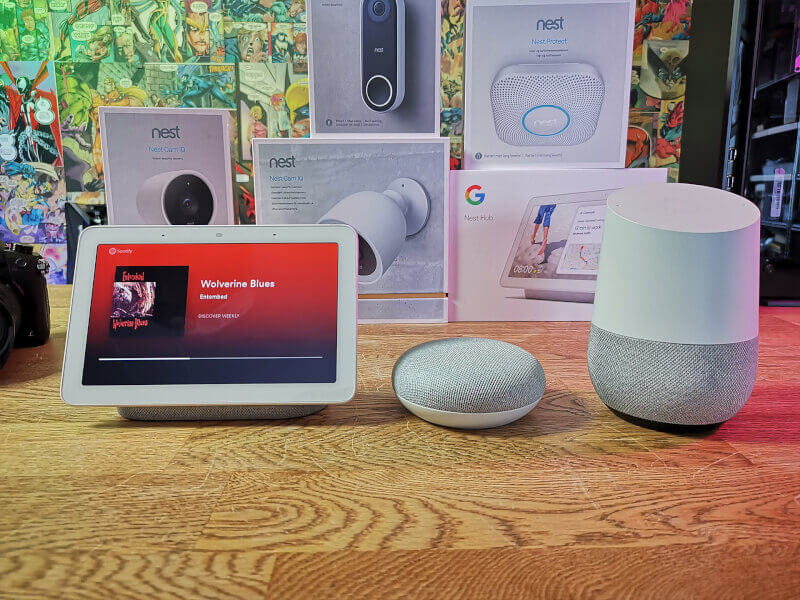
There are routines missing, as I also noted during my initial encounter with the Google Home solution. I’d love for nothing more than to be able to say that these features are coming, but there’s no word from Google as to when we will see these things change. The Danish Google team is continuing to develop features, and when I asked them about this, they kept responding that these things are “coming soon”. However, no timeline has been provided.
So, you don’t get the full package when using the Danish language. If you are able to simply use it in English, though, you’ll have access to all of the features on offer.
Even though I’ve generally been very pleased with the Google Nest Hub, there are a few things that drag the score down a bit. The product has been available for more than three months now, and we still do not have access to all of its features (due to the language issue that I mentioned before). Personally, I’ve been very happy with the Nest Hub, and I guess it’s down to the individual consumer to decide if these issues are showstoppers or not. It really depends on how much of a power user you are, and of course, what language requirements you might have.
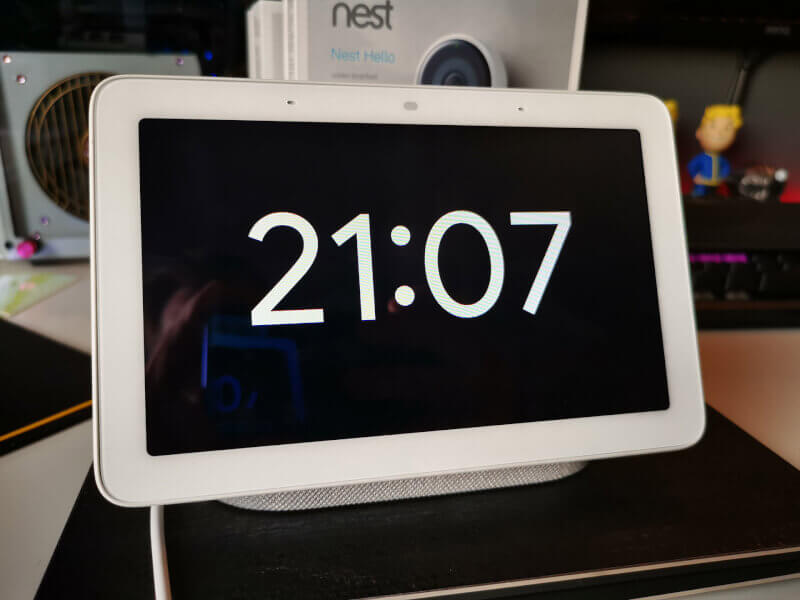
The Google Nest Hub is a product for those that are a bit more nerdy than the average Google Home user. We arrive at a final score of 7 for the Google Nest. There are some really fine applications of this unit, but it ties down with how involved and nerdy you are with your Smart Home setup. Unfortunately, it’s probably the same group of people that are likely to encounter challenges or limitations with this product, such as the missing routines when using the Danish language option.
But if you can imagine using this device in the kitchen, just as I’ve been doing, you’ll be able to make use of a lot of very helpful features that certainly qualifies the Google Nest Hub as a helpful addition to your household. However, if that’s not the case, then $149 is is a high price to pay for a digital photo frame with built-in Google Assistant.
Pros:
The display is clear and responsive and adjusts automatically to the surroundings
More information presented on-screen
Provides a physical interface to manage all connected Smart Home units
Cons:
Limited feature support in Danish

Latest smart home
-
24 Sepsmart home
-
19 Augspeaker
Ultimate Ears Everboom
-
16 Augsmart home
Apple's smart home robot could cost $1,000
-
29 Julsmart home
Arlo Essential indoor camera 2K
-
05 Julsmart home
Apple code suggests new Smart Home device
-
29 Junspeaker
Anker Soundcore 2
-
17 Junsmart home
Get your Smart Light updated with Wiz
-
03 Junspeaker
Tribit StormBox Flow
Most read smart home
Latest smart home
-
24 Sepsmart home
Google TV Streamer 4K
-
19 Augspeaker
Ultimate Ears Everboom
-
16 Augsmart home
Apple's smart home robot could cost $1,000
-
29 Julsmart home
Arlo Essential indoor camera 2K
-
05 Julsmart home
Apple code suggests new Smart Home device
-
29 Junspeaker
Anker Soundcore 2
-
17 Junsmart home
Get your Smart Light updated with Wiz
-
03 Junspeaker
Tribit StormBox Flow






